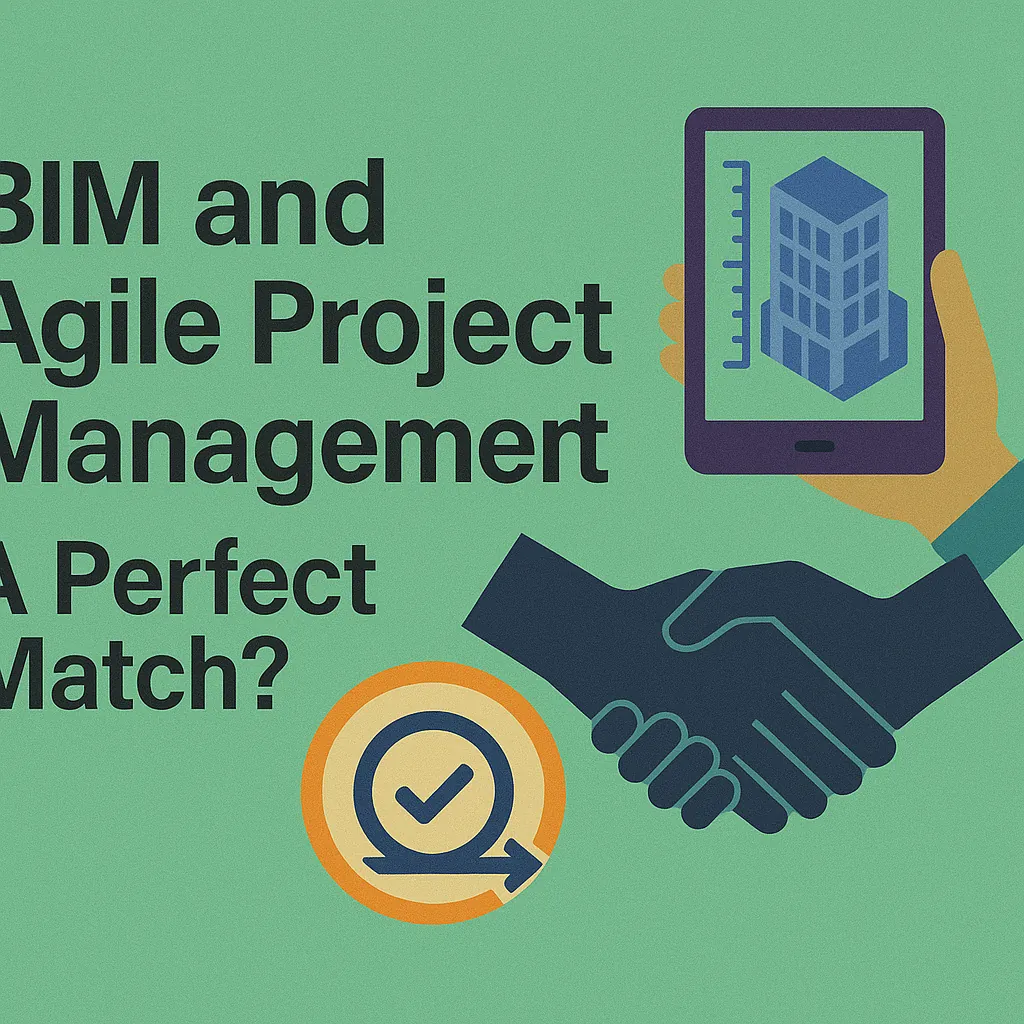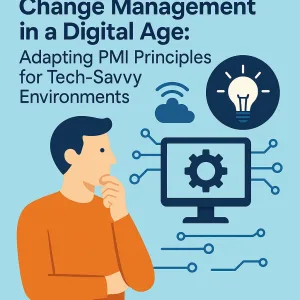Introduction to BIM and Agile Project Management
Two methodologies have emerged as transformative forces: Building Information Modeling (BIM) and Agile Project Management. Understanding these concepts is crucial for project managers and agile practitioners looking to enhance project outcomes through their integration.
Defining Building Information Modeling (BIM)
Building Information Modeling (BIM) is a digital representation of the physical and functional characteristics of a facility. It serves as a shared knowledge resource for information about a facility, forming a reliable basis for decisions during its life cycle, from inception onward. The significance of BIM in construction and project management includes:
- Enhanced Collaboration: BIM facilitates collaboration among various stakeholders, including architects, engineers, and contractors, by providing a centralized platform for sharing information.
- Improved Visualization: With 3D modeling capabilities, BIM allows project teams to visualize the project before construction begins, helping to identify potential issues early in the design phase.
- Increased Efficiency: By streamlining processes and reducing errors, BIM can lead to significant time and cost savings throughout the project lifecycle.
- Lifecycle Management: BIM supports the management of a building’s lifecycle, from design and construction to operation and maintenance, ensuring that all phases are aligned and informed by accurate data.
Understanding Agile Project Management
Agile Project Management is a methodology that emphasizes flexibility, collaboration, and customer satisfaction. It is characterized by several core principles:
- Iterative Progress: Agile promotes breaking projects into smaller, manageable units called iterations or sprints, allowing teams to deliver incremental value and adapt to changes quickly.
- Customer Collaboration: Agile methodologies prioritize customer feedback and involvement throughout the project, ensuring that the final product meets their needs and expectations.
- Emphasis on Team Dynamics: Agile encourages self-organizing teams that are empowered to make decisions, fostering a culture of collaboration and innovation.
- Adaptability: Agile methodologies are designed to respond to change rather than follow a fixed plan, making them particularly effective in dynamic environments.
The Synergy of BIM and Agile Methodologies
Combining BIM with Agile methodologies presents a unique opportunity to enhance project outcomes. The integration of these two approaches can lead to:
- Improved Communication: Agile’s focus on collaboration aligns well with BIM’s centralized information sharing, fostering better communication among project stakeholders.
- Faster Decision-Making: The iterative nature of Agile allows teams to make quick decisions based on real-time data from BIM, reducing delays and enhancing responsiveness.
- Enhanced Risk Management: By visualizing potential issues through BIM and addressing them in iterative cycles, teams can mitigate risks more effectively.
- Greater Client Satisfaction: The combination of BIM’s detailed visualization and Agile’s customer-centric approach ensures that client needs are met throughout the project lifecycle.
The Synergy Between BIM and Agile Methodologies
The integration of Building Information Modeling (BIM) with Agile methodologies presents a compelling opportunity to enhance project outcomes. Both approaches prioritize collaboration, adaptability, and efficiency, making them a natural fit for modern project environments. Here’s how BIM and Agile complement each other:
1. Visual Data Management Supporting Iterative Processes
BIM excels in visual data management, providing a comprehensive digital representation of physical and functional characteristics of a project. This visual aspect is crucial for Agile methodologies, which thrive on iterative processes and continuous feedback.
- Enhanced Clarity: BIM allows project teams to visualize complex data in a user-friendly format, making it easier to understand project requirements and progress. This clarity supports Agile’s iterative cycles, where teams can quickly assess and adapt to changes based on visual feedback.
- Real-Time Updates: As changes occur, BIM can be updated in real-time, ensuring that all stakeholders have access to the most current information. This aligns with Agile’s emphasis on flexibility and responsiveness, allowing teams to pivot as needed without losing sight of the overall project vision.
2. Importance of Collaboration and Stakeholder Engagement
Collaboration is a cornerstone of both BIM and Agile methodologies. Effective stakeholder engagement is essential for the success of any project, and both approaches foster an environment where communication and collaboration can flourish.
- Cross-Disciplinary Teams: BIM encourages collaboration among various disciplines—architects, engineers, contractors, and clients—by providing a shared platform for information exchange. Agile methodologies further enhance this collaboration through regular stand-up meetings, sprint reviews, and retrospectives, ensuring that all voices are heard and considered.
- Stakeholder Involvement: Engaging stakeholders throughout the project lifecycle is vital. BIM facilitates this by allowing stakeholders to visualize the project and provide feedback at various stages, which is a key principle of Agile. This continuous engagement helps to align project goals with stakeholder expectations, reducing the risk of miscommunication and rework.
3. Enhanced Planning Through Better Visualization and Data Representation
BIM’s capabilities in data representation significantly enhance Agile planning processes. The ability to visualize project components and their interrelationships allows for more informed decision-making.
- Improved Planning Accuracy: With BIM, project managers can create detailed visualizations that depict timelines, resource allocations, and potential bottlenecks. This level of detail supports Agile planning by enabling teams to identify risks early and adjust their strategies accordingly.
- Facilitating Sprint Planning: During sprint planning sessions, BIM can provide a clear visual context for the tasks at hand, helping teams to prioritize effectively and allocate resources where they are most needed. This visual aid can lead to more productive discussions and better outcomes in sprint cycles.
Key Benefits of Integrating BIM with Agile Project Management
The integration of Building Information Modeling (BIM) with Agile project management methodologies presents a transformative opportunity for project teams in the construction and architecture sectors. By leveraging the strengths of both approaches, organizations can enhance project outcomes significantly. Here are the key benefits of this integration:
- Improved Communication and Transparency: One of the foremost advantages of combining BIM with Agile practices is the enhancement of communication among team members and stakeholders. BIM provides a centralized platform where all project data, including designs, schedules, and budgets, are accessible in real-time. This transparency fosters a collaborative environment where team members can share insights and updates seamlessly. Agile methodologies, with their emphasis on regular stand-ups and iterative feedback loops, further promote open dialogue, ensuring that everyone is aligned and informed throughout the project lifecycle. This synergy minimizes misunderstandings and enhances stakeholder engagement, leading to more cohesive project execution.
- Faster Decision-Making Processes: The integration of BIM with Agile methodologies accelerates decision-making by providing real-time access to critical project data. Agile practices encourage teams to make decisions quickly based on the most current information available. With BIM, project managers and team members can visualize project elements and assess impacts instantly, allowing for swift adjustments to plans and designs. This capability is particularly beneficial in fast-paced environments where timely decisions are crucial to maintaining project momentum and meeting deadlines. The ability to access and analyze data on-the-fly empowers teams to respond to challenges proactively, reducing delays and enhancing overall project efficiency.
- Reduced Risks and Errors: Continuous feedback and iterative design adjustments are hallmarks of both Agile and BIM. By integrating these methodologies, project teams can significantly reduce risks and errors throughout the project. BIM allows for early detection of potential issues through detailed modeling and simulations, while Agile practices encourage regular reviews and adaptations based on stakeholder feedback. This iterative approach means that teams can make necessary changes before they escalate into costly problems. The combination of proactive risk management and responsive design adjustments leads to higher quality outcomes and greater client satisfaction.
Challenges of Implementing BIM in Agile Environments
Integrating Building Information Modeling (BIM) with Agile project management methodologies presents a unique set of challenges that project managers and Agile practitioners must navigate. While the synergy between BIM and Agile can lead to enhanced project outcomes, recognizing and addressing these obstacles is crucial for successful implementation. Here are some key challenges and insights on overcoming them:
1. Cultural Shift from Traditional to Agile Methodologies
- Resistance to Change: Teams accustomed to traditional project management approaches may resist the shift to Agile practices. This resistance can stem from a lack of understanding of Agile principles or fear of losing control over project processes.
- Collaboration and Communication: Agile emphasizes collaboration and continuous feedback, which may be a departure from the more hierarchical and linear communication styles of traditional methodologies. Teams must foster an environment that encourages open dialogue and iterative feedback loops.
- Leadership Support: Successful cultural transformation requires strong support from leadership. Leaders must champion Agile principles and demonstrate their commitment to the transition, helping to alleviate fears and build trust within the team.
2. Technical Challenges of Integrating BIM Tools with Agile Practices
- Tool Compatibility: Many BIM tools are designed for traditional project management workflows, which can create compatibility issues when integrating with Agile software. Project managers need to assess the tools available and select those that can seamlessly work within an Agile framework.
- Data Management: Agile methodologies rely on real-time data and rapid iterations, while BIM often involves extensive data sets that require careful management. Ensuring that BIM data is accessible and usable in an Agile context is essential for maintaining project momentum.
- Workflow Adaptation: Agile practices involve iterative cycles and sprints, which may not align with the more structured phases of BIM processes. Teams must adapt their workflows to accommodate both methodologies, ensuring that BIM deliverables are produced in a timely manner without compromising quality.
3. Need for Training and Change Management
- Skill Development: To effectively integrate BIM with Agile, team members may require training in both BIM tools and Agile methodologies. This training should focus on practical applications and real-world scenarios to enhance understanding and usability.
- Change Management Strategies: Implementing change management strategies can help ease the transition. This includes setting clear expectations, providing ongoing support, and creating feedback mechanisms to address concerns and improve processes.
- Continuous Learning: Encouraging a culture of continuous learning can help teams adapt to new tools and methodologies. Regular workshops, training sessions, and knowledge-sharing forums can facilitate this ongoing development.
By acknowledging these challenges and proactively addressing them, project managers and Agile practitioners can create a more conducive environment for integrating BIM into Agile workflows. This integration not only enhances project outcomes but also fosters a culture of innovation and adaptability within teams.
Best Practices for Integrating BIM with Agile Project Management
Integrating Building Information Modeling (BIM) with Agile project management methodologies can significantly enhance project outcomes by fostering collaboration, flexibility, and efficiency. Here are some best practices for practitioners looking to merge these two powerful approaches:
1. Encourage Early Stakeholder Involvement
- Align Project Goals: Involve stakeholders from the very beginning of the project to ensure that their needs and expectations are clearly understood and aligned with the project goals. This early engagement helps in identifying potential challenges and opportunities, leading to a more cohesive project vision.
- Facilitate Communication: Regularly scheduled meetings and workshops can be organized to gather input from stakeholders, ensuring that their feedback is incorporated into the BIM models and Agile processes. This collaborative approach not only builds trust but also enhances the quality of the final deliverable.
2. Emphasize Continuous Learning and Adaptation
- Iterative Development: Adopt an iterative approach to project development, where BIM models are continuously updated based on feedback and new insights. This allows teams to adapt to changes quickly and effectively, ensuring that the project remains aligned with stakeholder expectations.
- Retrospectives and Reviews: Implement regular retrospectives to reflect on what is working well and what needs improvement. This practice encourages a culture of continuous learning, enabling teams to refine their processes and enhance collaboration over time.
3. Suggest Tools and Technologies
- BIM Software Integration: Utilize BIM software that supports Agile methodologies, such as Autodesk Revit or ArchiCAD, which allow for real-time collaboration and updates. These tools can help teams visualize changes and track progress more effectively.
- Project Management Tools: Leverage Agile project management tools like Jira or Trello to manage tasks, sprints, and backlogs. These platforms can be integrated with BIM tools to streamline workflows and enhance communication among team members.
- Cloud-Based Solutions: Implement cloud-based BIM solutions that facilitate remote access and collaboration. This ensures that all team members, regardless of location, can contribute to the project and stay updated on changes.
By following these best practices, project managers and Agile practitioners can effectively integrate BIM with Agile methodologies, leading to improved project outcomes, enhanced collaboration, and a more adaptive project environment. This synergy not only maximizes the potential of both approaches but also positions teams to respond proactively to the dynamic nature of construction projects.
Conclusion: The Future of BIM and Agile Project Management
The integration of Building Information Modeling (BIM) with Agile project management methodologies presents a transformative opportunity for the construction and architecture industries. As we look to the future, it is essential to recognize the potential of this combination to enhance project outcomes significantly. Here are some key insights to consider:
- Transformative Potential: The synergy between BIM and Agile methodologies can lead to more efficient project workflows, improved collaboration among stakeholders, and enhanced adaptability to changes. By leveraging BIM’s visual and data-rich environment alongside Agile’s iterative and flexible approach, project teams can respond more effectively to evolving project requirements and stakeholder feedback.
- Ongoing Exploration and Adaptation: As technology continues to advance, the methodologies we use must also evolve. Embracing BIM and Agile together encourages a culture of continuous improvement and innovation. Project managers and Agile practitioners should remain open to experimenting with new tools and techniques that can further enhance this integration, ensuring that they stay ahead in a rapidly changing landscape.
In conclusion, the future of project management lies in the ability to adapt and innovate. By harnessing the strengths of both BIM and Agile methodologies, project teams can not only improve their processes but also set new standards for excellence in the industry. Let us continue to explore this exciting intersection and work together towards a more efficient and collaborative future in project management.
Find out more about Shaun Stoltz https://www.shaunstoltz.com/about/.
This post was written by an AI and reviewed/edited by a human.



